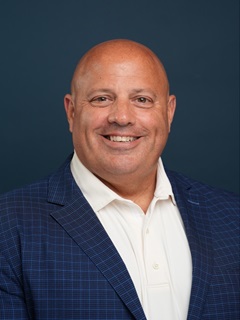KPMG IGNITION STRATEGIC INTELLIGENCE: HUMAN SIDE OF INNOVATION

Human innovation in an age of change
Macro forces—including demographic and consumer change, geopolitical frictions, economic uncertainty, supply chain disruptions, and rapid technological advancement—are causing increased uncertainty and risk in the business landscape. The interconnectedness of these challenges demands a new approach to leadership—one that encompasses both capacity and character. It requires leaders to demonstrate humility in recognizing the magnitude of change, raise their uncertainty threshold to adapt to new circumstances, apply integrative thinking to understand internal and external forces at play, and show agility when acting on the implications.
Why people?
Why do people matter in the face of such overwhelming change? Because it all starts and ends with people. People will take up a new technology and help realize its potential, or not. People will determine in both their personal and professional lives whether a technology’s promise is worth the friction of the uptake and the possible trade-offs to their lives, or not. People will leverage a new technology to drive us past scarcity and its related mindset toward growth and abundance, or not. Ultimately, it isn’t an organization that embraces change; it’s the people within the organization who change, starting with its leaders.
Their role
When implementing innovations, leaders and organizations need to determine the right role for people. In other words, what is best done by people or simply secured or verified by them? With the proliferation of technology, where is human certification needed? On which tasks can technology take the first pass while people use that time to upskill and prepare to better handle the final 20 percent to 25 percent of the task? Where does technology fall short, adding complexity rather than removing it? Leaders must be intentional when navigating these tensions; an all-or-nothing approach risks leaving the organization terribly behind or terribly ineffective.
When leaders view technology as a top-down method of gathering efficiencies, they make a critical error. Not only do they open themselves to risks by not having the human in the loop, but they miss out on the underlying ability of their human capital to drive innovation and value in how the technology can enhance their current abilities and bring them new ones.
Brian Miske
KPMG US Ignition Leader
The sense of sensemaking

Such nuances have become more challenging in the always-on, ultra-networked ecosystem in which organizations now operate. The resulting data “geyser” makes it increasingly difficult to discern what truly matters and identify an effective response. The rise of artificial intelligence further complicates this issue—potentially adding more solutions and data to the geyser and creating more noise that could drown out meaningful signals.
Meanwhile, poly-crises have forced organizations to play a larger role in society, with people looking to them for leadership on political, environmental, and social topics. This shift adds context to the complexity in sensemaking and solutioning. The goal is to deploy the right people with the right skills and then organically augment their skills with appropriate technology. The ideal result: an operation with strong signals “sensing,” which drives proactive decisions.
Empathy, humility, adaptability
In recognizing people’s role in change, it is crucial for leaders to understand the messy human side of organizations and, indeed, innovation. Driving innovation requires collaboration across diverse opinions, backgrounds, and experiences. It needs appropriate resources and to be supported by a humble culture that rewards trying and failing in the quest for success. Leaders must have the empathy to connect with the wide-ranging group of stakeholders and nurture an ecosystem of excellence in people, information, and technology.
Adding to the complexity undergirding the human side of innovation are generational shifts related to the Why (purpose) of work, along with new options for the What, Who, Where, How, and When. KPMG Ignition’s Future of Work Strategic Intelligence Perspective analyzed more than 155 sources and a primary survey of more than 1000 workers. The findings reiterated that employees are seeking organizations that align with their values and offer opportunities for professional growth in an ecosystem that matches their desired experiences, rather than simply earning a paycheck. As organizations try to work out the correct structure and environment for their workforce, leaders should also prepare to engage with a broader set of vocal and demanding stakeholders. Thanks to the power of social media, these stakeholders can quickly coalesce and amplify their opinions. The potent combination of empathy, humility, and adaptability will enable business leaders to navigate these dynamics and the changing nature of leadership—not just in their organization, but also around the world.
Human innovation

KPMG Ignition creates a space that allows our clients to experience the best of the firm, from client care to our subject matter professionals, to a different way of looking at how to solve for both their day-to-day and larger strategic imperatives. This is what we mean when we say we talk about the human side of innovation. It’s not just us enabling, it our clients being empowered to unlock the best of themselves.
Katie Dahler
KPMG US National Managing Principal for Growth & Strategy
Explore potential experiences with KPMG Ignition
We do more than talk about a future where adaptability and agility matter. We also strive to be adaptable and agile with our clients. Our experienced professionals create practical approaches designed to help clients achieve their business ambitions while navigating the next wave of innovation. No designed program is the same. Your engagement makes it unique to your organization. Act now to stay afloat during this new wave of change.
Meet the contributors

